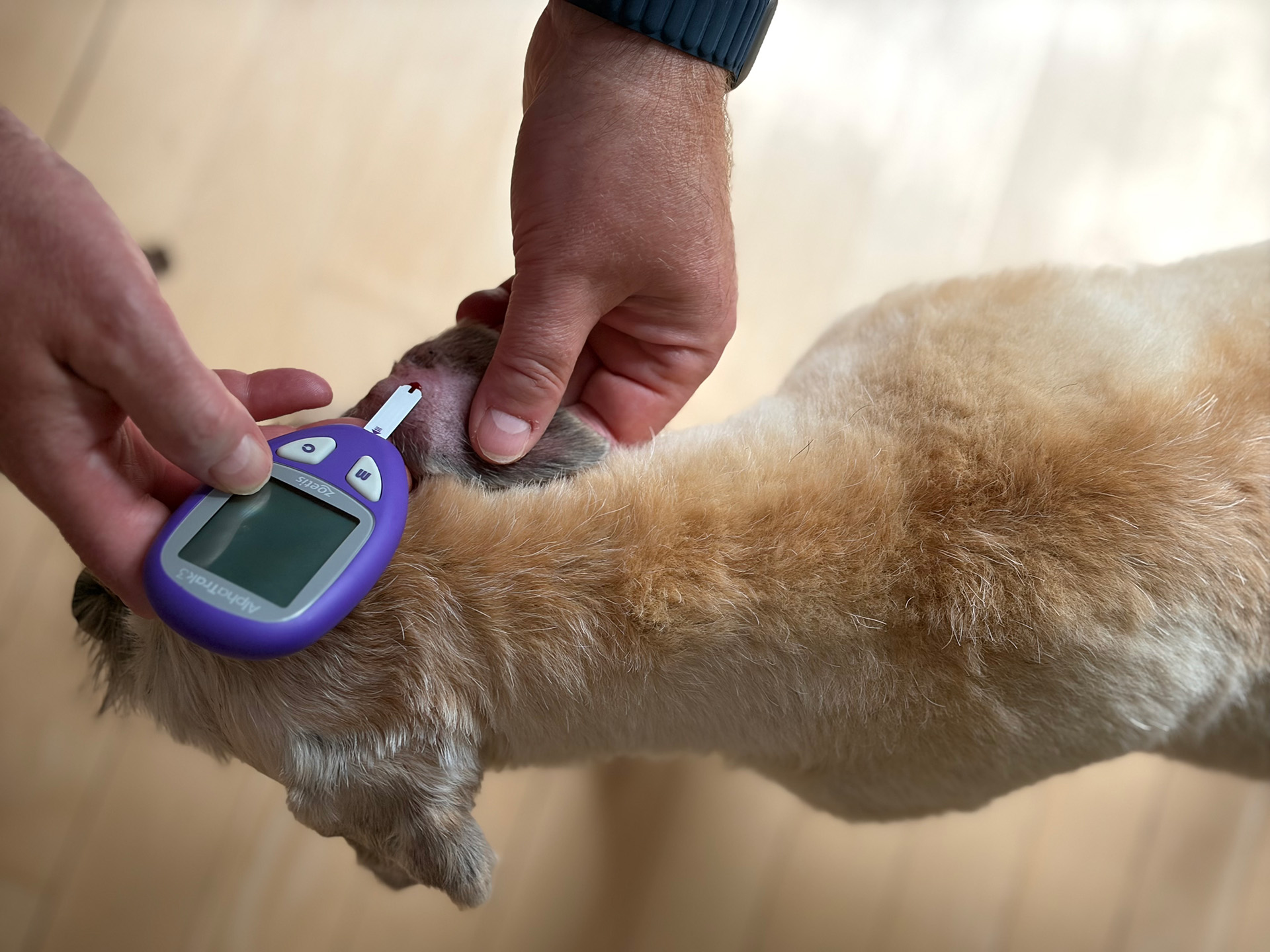September 8, 2025
5 minutes
Rob Hyams
September 11, 2025
7 minutes

When we first learned that we would have to do blood tests on our newly-diagnosed terrier Parker, I had a moment of panic. I’m not overly squeamish, but the newness of the situation was intimidating.
Over time it became a natural part of our daily routine, like flossing or making a morning coffee. We’ve become so efficient at it that I had to think about it when writing this post.
One thing we learned early was to choose the right spot to collect a small blood sample. Like most things, some areas are easier, more comfortable for your dog, and give more reliable results.
We learned that dogs have different skin thickness, blood vessel size, and fur coverage in different parts of their body. That was news to me. So the best testing sites are ones that:
This last point is important. I remember the night the vet tech showed us how to draw blood from Parker’s ear using the flashlight on my phone and a pushpin-like lancet. In that moment I felt awkward, clumsy and really disliked the idea of stabbing our sickly little terrier’s ear over and over after all he had been through for the previous few days.
I also felt like I needed three hands. One to hold the phone flashlight under his ear, one to hold the lancet, and another to keep our dog still.
I’ve since learned that I can cradle him in my body, and I don’t need a flashlight under his ear as we use the PetTest Genteel lancing device, which is a piece of low-tech marvel for diabetic dog owners.
Here are the most commonly recommended locations:
Why it works: The edges of the ear (especially the outer margin) have fine capillaries close to the surface. We test Parker in his ear. It’s been almost three years and I recently asked his vet if he was getting scarring from all the test but so far so good.
How to do it: Warm the ear first by gently rubbing it or holding a warm rice sock <<LINK>> against it to improve blood flow. Use a lancet on the edge (not the inner, thicker part).
Pros: Widely used, easy to reach, quick to heal.
Cons: Can be tricky with dogs who have very hairy or dark-colored ears.
We regularly clean Parker’s ears with an alcohol wipe to clear away the scabs and dried bits of blood.
Why it works: The inside edge of the lip has good blood supply.
How to do it: Gently lift the lip and prick the inner fold where there are fewer nerve endings.
Pros: Reliable blood flow, often tolerated well.
Cons: Some dogs may resist at first; we hear it takes practice to handle gently.
Why it works: The pads have rich capillaries and provide a good blood drop.
How to do it: Choose a clean, dry paw pad and prick the edge rather than the center to reduce sensitivity.
Pros: Consistent blood supply, works well if ears aren’t an option.
Cons: Pads are tougher skin — may require a slightly deeper lancet setting; can be sore if used too often.
Why it works: Mucous membranes bleed easily.
Pros: Quick blood collection.
Cons: Less comfortable for dogs, more difficult for owners, higher chance of contamination with saliva. Usually a backup option.
Warm the site before pricking to help blood flow with a rice sock or hand/mitten warmer.
Rotate sites to avoid soreness or bruising.
Use gentle restraint — praise and treats help your dog stay calm.
Keep supplies ready so the process is quick.
Practice patience — both you and your dog will become more confident with time.

The best location to test your dog’s blood glucose depends on their comfort, your skill, and what works reliably for both of you. The ear margin, lip fold, and paw pad are the most common and effective sites. Work with your veterinarian to learn the technique and decide which site suits your dog best.
For Parker, we use the inside of his ear flap. We've been doing this for almost three years with no issues or scars.
With practice, at-home glucose testing becomes a simple part of your routine — and one of the most valuable tools to keep your diabetic dog healthy and thriving.

We’re a couple of pet owners who’ve learned firsthand what it takes to care for a diabetic dog. When our own dog, Parker, was diagnosed, we were overwhelmed, so we built this site to make things a little clearer for others starting out. Everything here is designed to help you understand, plan, and feel more confident managing your dog’s diabetes.
September 8, 2025
5 minutes